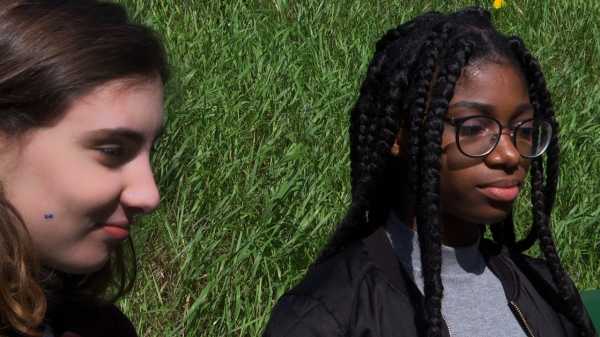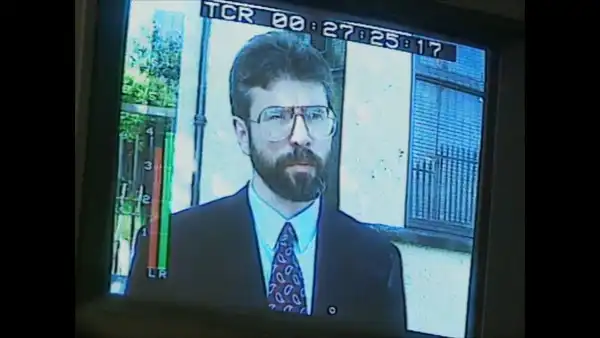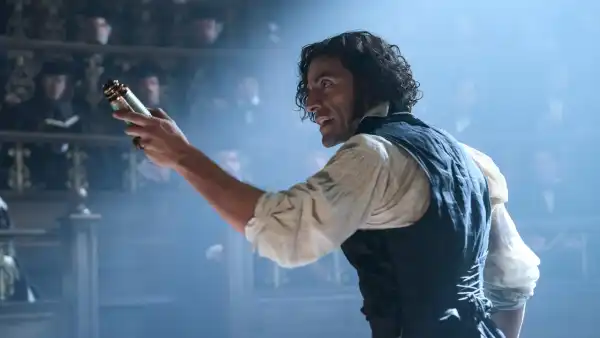
Claire Simon’s new documentary, “Young Solitude,” is an extraordinarily trenchant and far-reaching view of the lives of a group of current-day high-school students in a suburb of Paris. It was released in France in November; it was screened once at the Museum of the Moving Image, in January; and now it’s in ultra-wide release—which is to say, it’s available to stream. It’s not clear if it will ever get what’s considered a theatrical release, a week-long theatrical run—such as Simon’s 2016 documentary, “The Competition,” a.k.a. “The Graduation,” is receiving today, at Metrograph. Which is to say, it’s not clear if “Young Solitude” will be in line for year-end awards, or get the quantity of critical attention that it deserves. Letting editorial decisions be made by the Academy’s definition of a theatrical release—in other words, by the protections that the Academy self-interestedly affords movie theatres—is an injustice to filmmakers and movie viewers alike; “Young Solitude” is a feature film, and an excellent one, which is certain to be among the best new documentaries “released”—made available to view, and much more widely than in a limited theatrical run—this year.
Simon made her film at the invitation of a cinema-studies class in the “première” class (the French equivalent of eleventh grade) in the suburb of Ivry-sur-Seine. One of the girls who participates in it tells a friend that she wants to make a movie about the relationships between parents and children. If she does so, she’ll find an imposing precursor in Simon’s own film. “Young Solitude” is composed almost entirely of discussions among duos, trios, and quartets that crystallize spontaneously from among a group of ten students (eight girls and two boys) in and around the school (and on a couple of jaunts to nearby Paris); most of the students’ discussions are centered on their own relationships with their parents—and even when the students discuss their own romantic lives, their family backgrounds intrude, largely as a series of warning lights to counsel caution and diminish expectations (yet, remarkably, not hopes).
From this intimate perspective, the discussions open far-reaching vistas of political history along with a miniature panorama of current-day France. The neighborhood, the school, and the group of ten onscreen participants is ethnically diverse; Simon offers a closeup view of a country with a significant immigrant population and shows how world events find their way into daily life—the destructive legacy of civil war, the traumas of poverty and neglect, the family separations imposed by the vagaries of migration. Family life turns out to be no less stressful (perhaps even more so) for the teens born in France to non-migrant families. One girl cites the physical abuse that her parents endured in their own childhood for their current-day sufferings (including her mother’s mental illness and institutionalization); one boy never sees and hardly knows his father, who left the family for another woman and then “reappeared” (which the boy considers a ludicrous failure); another boy suffers grievously from his father’s remoteness and seeming indifference.
Amid the seeming inner noise of parental stresses visited upon the children as well as the relentless pressure of their past, these students discuss their own romantic lives. One girl, with a cast on her hand, explains that she broke her hand “because of a boy” (she “got annoyed and punched a wall”) and launches into an explanation that could be a textbook definition of desperate romanticism: “You’ll see, when you’re in love, you lose control, but you don’t want to be in love, you’re afraid, you stop yourself . . .” A boy thinks that he’ll love his current girlfriend forever, “though it can change.” A trio of girls speak of love and family, observe their parents’ affairs and romantic chaos, and all speak of hoping that their first love will be lasting, of wanting to have children, of not wanting to get divorced. As one girl says, “Children need happy circumstances.”
Meanwhile, these students, struggling with the problems of adults while closely tethered to childhood, pursue art—music, dance, writing, and, of course, the cinema itself. (It’s easy to imagine them facing the hurdles of “The Competition” a few years from now.) Simon’s connection with the school and its film-studies class proved both practically and artistically decisive: she does her own cinematography, and she recruits four members of the class—who are also onscreen participants in the film’s discussions—to record sound. Though the crew and the equipment aren’t on view in the film and the students don’t overtly interact with the filmmakers onscreen, the trust and even complicity between Simon and the students is apparent.
The students speak to each other, on camera, with an extraordinary frankness, and Simon’s cinematography is alive to the word—to the dialectic, to the give and take, to the spaces between the students that the words define, as if the high relief of the students’ energetic presence were matched by the detailed definition of the ideas and experiences and emotional bonds that hold them together. Without a word about practical politics, “Young Solitude” is a loamy, deep-rooted vision of society—and of the intimate progress, the progress in personal relationships, attitudes, and self-consciousness, on which public progress depends.
Stream “Young Solitude” on Amazon Prime.
Sourse: newyorker.com






